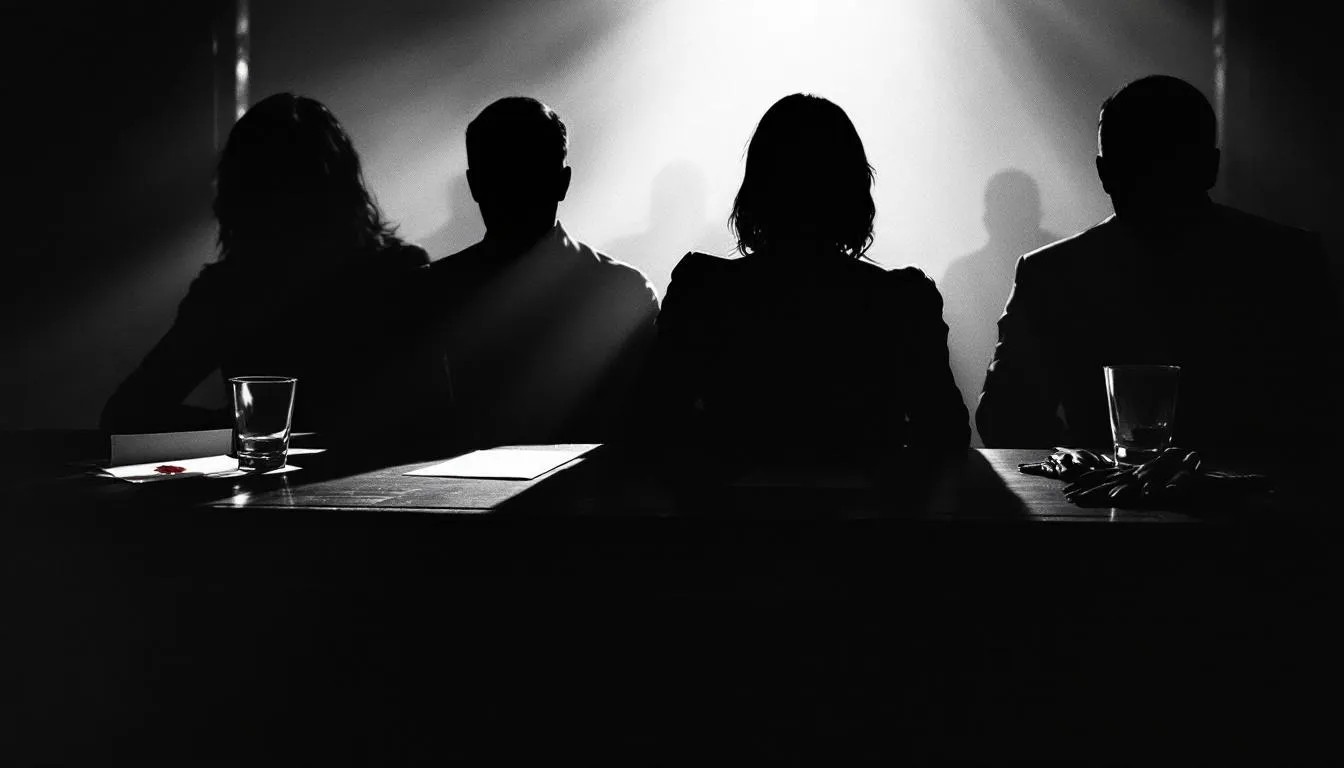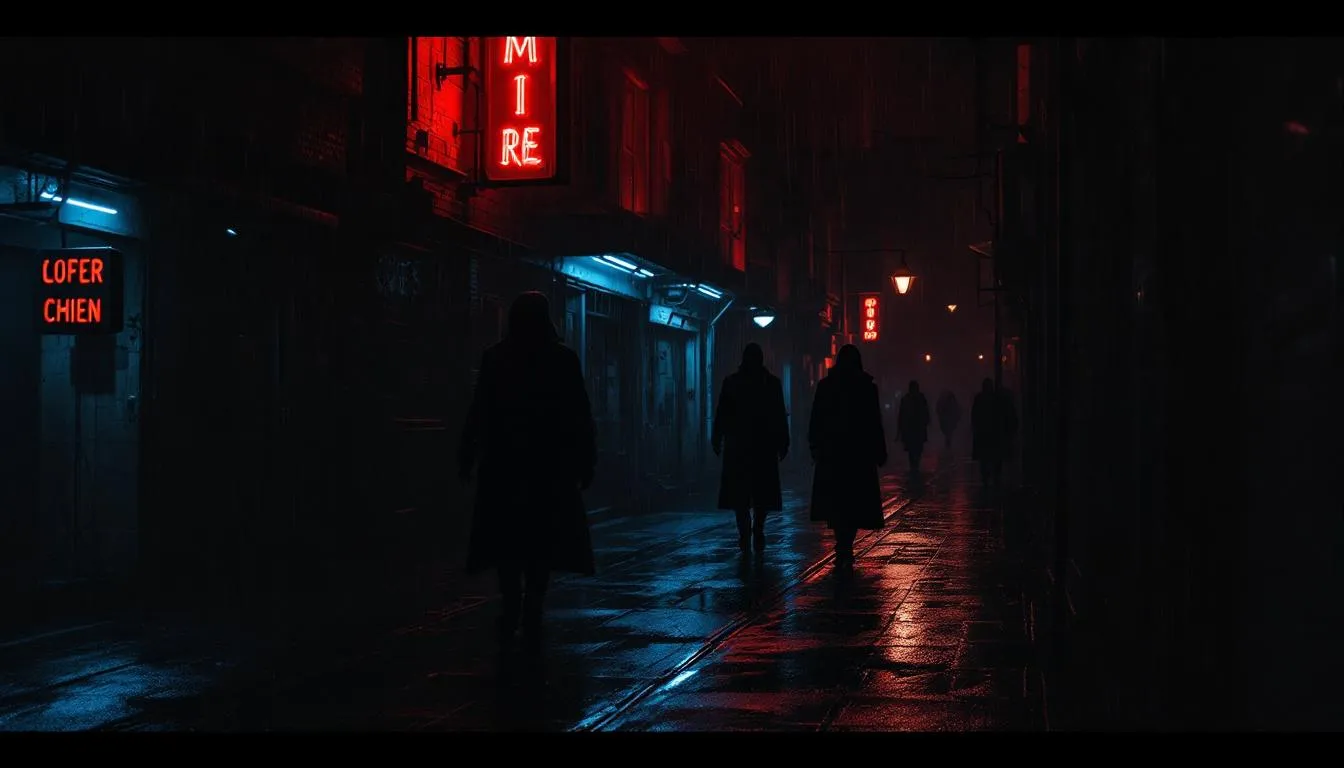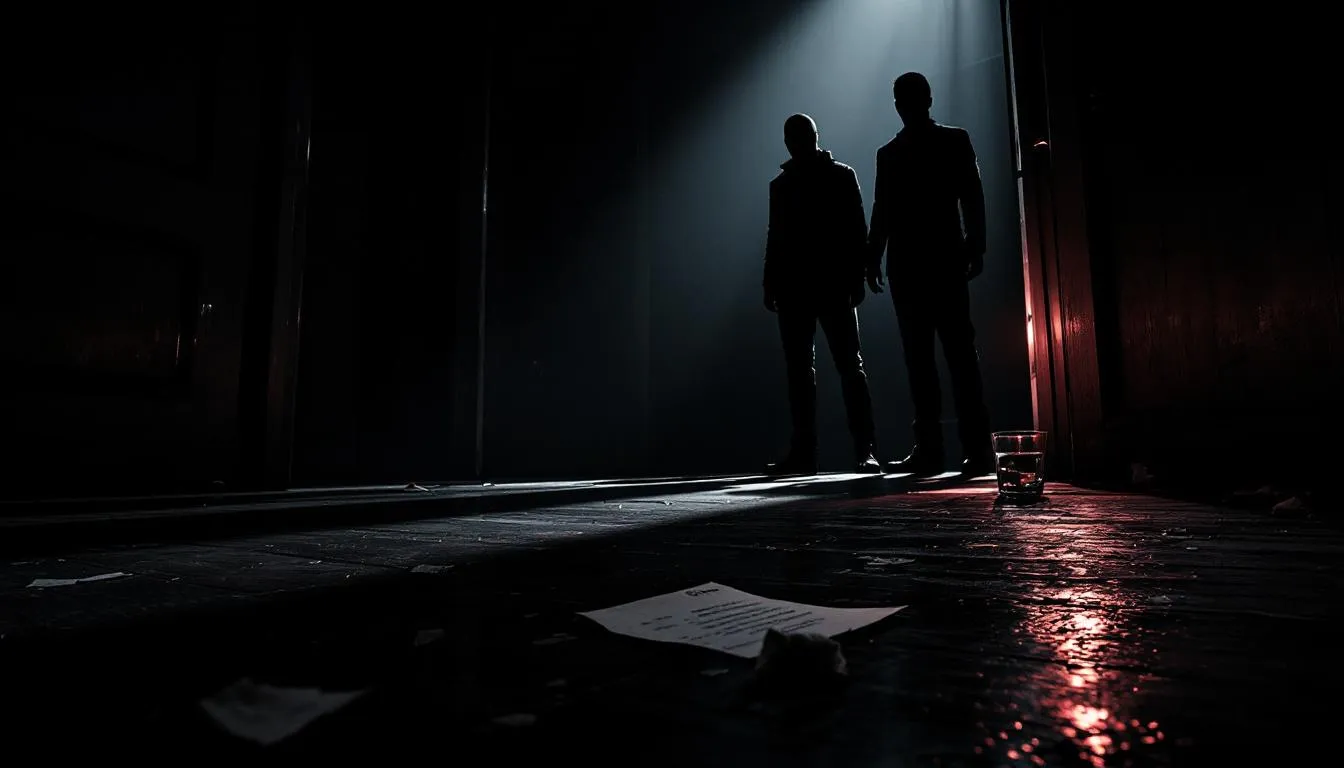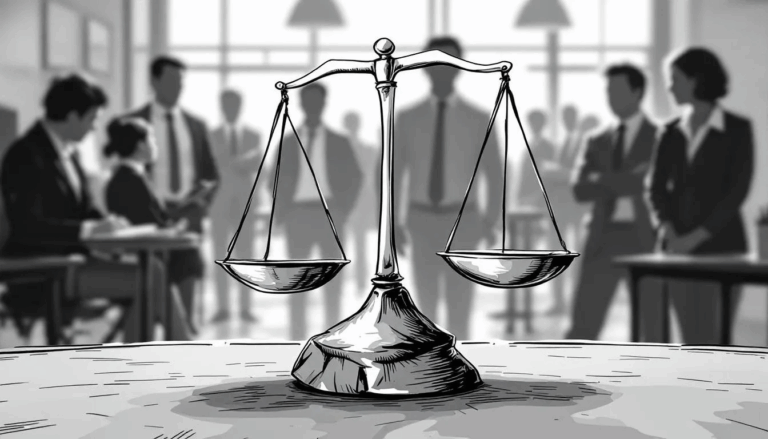Circumstantial evidence is crucial in court cases, especially when direct evidence is missing. It helps the finder of fact decide what the facts are. This article explains what circumstantial evidence is, why it matters, and how it’s used in legal proceedings. Lawyers often rely on both direct and circumstantial evidence, including audio recordings, to establish facts and support their arguments in court. If you have a potential claim that you think involves circumstantial evidence, here is a link to an article with a free online tool that can help you evaluate your claim.
Introduction to Evidence and Circumstantial Evidence
Evidence is the foundation of any trial, serving as the means by which the facts of a case are established and the liability of a defendant is determined. In the realm of the justice system, understanding the difference between direct and circumstantial evidence is essential for anyone involved in the legal process. Direct evidence is a type of evidence that directly proves a fact without the need for inference—think of an eyewitness testimony describing the defendant committing a crime, or physical evidence like a video recording of the event. This kind of evidence leaves little room for doubt, as it provides a straightforward link between the defendant and the alleged law that was broken.
On the other hand, circumstantial evidence requires the jury or judge to draw logical conclusions based on the evidence presented. For example, forensic evidence such as DNA found at a crime scene may not directly prove the defendant committed the crime, but it can strongly suggest their involvement. Both direct evidence and circumstantial evidence play vital roles in a civil trials, and the strength of a case often depends on how these types of evidence are presented and interpreted. By understanding the unique characteristics of each type of evidence, legal professionals can build stronger cases and ensure that justice is served.
Key Takeaways
- Circumstantial evidence requires inference to connect the dots, unlike direct evidence that gives clear proof.
- Forensic, character, and digital evidence are all key forms of circumstantial evidence that can build strong cases, but they need to align for effective arguments.
- Juries are crucial in interpreting circumstantial evidence and must base their decisions on solid inferences rather than ambiguous conclusions.
What is Circumstantial Evidence?

Circumstantial evidence is the type of evidence that requires you to make an inference to draw a conclusion about whether a defendant did what they are accused of doing. Unlike direct evidence, such as an eyewitness account, circumstantial evidence does not prove a fact outright but allows for logical deductions to be made. For instance, seeing someone leave a crime scene with a weapon in hand doesn’t directly prove they committed the crime, but it strongly suggests it.
This type of evidence often involves piecing together multiple bits of information to support a claim. For example, finding the defendant’s fingerprints at a crime scene doesn’t directly prove they committed the crime, but it does suggest their presence there. Another example is the defendant’s forged signature on a document, which can serve as circumstantial evidence in cases of identity theft or fraud. Circumstantial evidence requires drawing reasonable inferences, which can sometimes make it seem less straightforward than direct evidence. Scientific evidence can also play a role in supporting claims in legal contexts.
However, it’s important to note that both direct evidence and circumstantial evidence are crucial in court cases. Eyewitness testimony, for instance, serves to confirm a fact without needing additional interpretation, making it a powerful form of direct evidence. A person admitting to a crime in a recorded confession, such as an audio recording related to rape, is another example of direct evidence. But in the absence of direct proof, circumstantial evidence can be just as compelling, especially when multiple pieces of it align to point towards a single conclusion, which a witness testimony can help clarify. Eyewitness accounts can further support these findings.
Forensic Evidence
Forensic evidence is one of the most compelling types of circumstantial evidence. This includes items like bullets, bloodstains, and other physical evidence found at a crime scene that can link a suspect to the crime. For example, DNA evidence can indicate that a person was present at the scene of the crime, though it does not directly prove they committed the crime.
Individual physical evidence, such as fingerprints or DNA, is particularly powerful as it can uniquely link a person to a crime scene. Finding a defendant’s fingerprints on a weapon used in a crime or their DNA at the scene can significantly bolster the prosecution’s case. However, such evidence is still considered circumstantial because it requires the inference that the person whose DNA or fingerprints were found was involved in the crime.
Forensic science plays a crucial role in criminal justice, with forensic scientists providing expert opinions that can help the jury understand the significance of the evidence presented. Trace evidence, such as tiny pieces of physical matter transferred during a crime, also contributes to building a strong circumstantial case.
When multiple pieces of forensic evidence are aligned, they can collectively provide a compelling narrative of the defendant’s involvement in the crime.
Character Evidence
Character evidence is another type of circumstantial evidence used in court. It involves information that portrays the defendant either positively or negatively, helping to establish a motive or pattern of behavior. For example, character evidence can be used to show that a defendant had a history of violent behavior, which might suggest a motive for committing a violent crime.
Habit evidence, which highlights consistent actions of a defendant in specific circumstances, is also a form of character evidence and can be categorized alongside other forms of evidence. This type of evidence is admissible in court and can be used to argue that a defendant was unlikely to have committed a the act in question if their habitual actions suggest otherwise, serving as a material fact in the case. Habit evidence can also be used to demonstrate that the defendant was likely in a different location at the time of the crime, supporting their alibi.
Presenting a broader picture of a person’s character can influence the jury’s perception of the defendant’s likelihood of defendant committing the crime and the person’s guilt.
Digital Evidence
In the digital age, digital evidence has become increasingly significant in court cases. This type of evidence includes data stored in binary form on electronic devices, such as text messages, emails, and GPS data. Digital evidence can help establish a timeline of events, showing where the defendant was at a particular time or what they were communicating about.
For example, emails and text messages can reveal a defendant’s intent or involvement in a crime, even if they do not directly prove that the person committed the act. A fact finder can consider GPS data that places a defendant at the crime scene, suggesting their presence during the time of the crimes.
While digital evidence still requires inference, it can be incredibly powerful in constructing a narrative that points towards the defendant’s guilt.
Types of Evidence
In a trial, several types of evidence may be presented to help establish the facts and prove or disprove that the Defendant did what was alleged. Physical evidence refers to tangible objects—such as a weapon, a piece of clothing, or a fingerprint—that can be used to directly prove a fact related to the crime scene. This type of evidence is often compelling because it provides a concrete link between the defendant and the alleged crime.
Eyewitness testimony is another powerful form of direct evidence, involving a person who witnessed the crime and can testify about what they saw. This type of evidence can directly connect a defendant to a criminal act, making it highly persuasive in court. Witness testimony, more broadly, can be either direct or circumstantial, depending on whether the witness is describing something they personally observed or providing information that requires the jury to make inferences.
Forensic evidence, such as DNA analysis or the identification of fingerprints, is typically considered circumstantial evidence. While it may not directly prove that a defendant committed a crime, it can strongly suggest their presence at the crime scene or involvement in the crime. Indirect evidence, also known as circumstantial evidence, implies a connection between the defendant and the crime but does not directly prove guilt. For example, finding the defendant’s fingerprints on a stolen item suggests involvement, but does not show the act of theft itself.
Each type of evidence—whether direct or circumstantial—plays a crucial role in the criminal trial process. The combination of physical evidence, eyewitness testimony, forensic evidence, and indirect evidence helps the court build a comprehensive picture of what happened and who may be responsible.
Expert Opinions
Expert opinions can be a unique and important type of evidence in trials. These opinions are provided by individuals with specialized knowledge, such as forensic scientists, medical professionals, or other experts in a particular field. During a trial, expert opinions can help interpret complex evidence—like DNA results, ballistics reports, or psychological evaluations—and explain their significance to the jury.
While expert opinions can be instrumental in helping the court understand technical or scientific aspects of the evidence presented, they are not always considered direct evidence. Instead, they often serve to clarify or support other types of evidence, such as forensic evidence or physical evidence found at the crime scene. Expert witnesses may be called upon to testify about the reliability of certain forensic methods, the meaning of scientific findings, or the likelihood that a particular piece of evidence proves a fact in the case.
The judge and jury ultimately decide how much weight to give expert opinions, considering them alongside all other types of evidence presented during the trial. Expert opinions are subject to cross-examination and must meet certain standards of reliability and relevance to be admissible in court. By providing context and specialized insight, expert opinions can play a pivotal role in helping the jury reach a fair and informed verdict.
How Circumstantial Evidence is Used in Court

Circumstantial evidence plays a crucial role in a trial, provided it is relevant and contributes to proving by a preponderance of the evidence that the Defendant did what it is accused of doing. The plaintiff’s attorneys must present evidence that convinces the jury that the Defendant did the facts that break the law. Jurors are tasked with making reasonable inference from this type of evidence, piecing together the information presented to form a coherent narrative of what occurred.
Digital evidence, such as emails and GPS data, often becomes vital in establishing a timeline of events. Linking various pieces of circumstantial evidence allows lawyers to create a compelling narrative pointing to the defendant’s wrongdoing. Lawyers often rely on circumstantial evidence to establish a Defendant broke the law when direct evidence is unavailable. For instance, if GPS data shows the defendant was in that location at the time of the incident, and text messages reveal intent, the combined evidence can be very persuasive.
Corroborating evidence is also crucial in enhancing the reliability of circumstantial evidence. When multiple pieces of relevant evidence support the same inference, it strengthens the case against the defendant. In contrast, when an eyewitness testifies, they provide direct evidence of the law that was broken Jurors must assess all the evidence presented, considering how each piece fits into the larger picture to determine whether it proves the defendant did things that broke the law by a preponderance of the evidence..
Comparing Circumstantial and Direct Evidence
Understanding the difference between direct circumstantial and direct evidence is key to appreciating their roles in court. Direct evidence provides straightforward proof of a fact, such as an eyewitness testimony where someone witnessed the crime being committed. Circumstantial evidence, on the other hand, does not directly prove a fact but allows for inferences to be made, including examples of direct evidence.
Despite their differences, the law treats both direct and circumstantial evidence equally in terms of admissibility. California jury instructions, for example, emphasize that jurors should weigh both types of evidence equally. In a criminal trial, a defendant can be convicted solely based on circumstantial evidence if multiple consistent pieces point to their guilt.
However, relying solely on circumstantial evidence can sometimes lead to wrongful convictions if it is not properly corroborated. The absence of direct proof heightens the need for thorough scrutiny to avoid miscarriages of justice. Therefore, while circumstantial evidence is often considered circumstantial evidence as persuasive as direct evidence, it must be handled with care to ensure fairness in the legal process.
Examples of Circumstantial Evidence in Real Cases

Real-life cases often illustrate the power of circumstantial evidence in achieving criminal conviction. In the high-profile case of Scott Peterson, circumstantial evidence played a significant role in his conviction, including:
- His suspicious behavior
- The purchase of a fishing boat
- The location where his wife’s body was found. In this particular case, the jury pieced together these bits of evidence to conclude his guilt. Circumstantial evidence is often crucial in cases where there is no direct evidence of someone committing crimes.
In contrast, the Casey Anthony murder case showed the limitations of circumstantial evidence. Despite numerous pieces suggesting her involvement in her daughter’s death, the jury acquitted her due to insufficient proof beyond a reasonable doubt. This case’s outcome highlights how circumstantial evidence must be robust and compelling to secure a conviction.
Other cases, like a robbery where a suspect was seen near the crime scene and then found with stolen items, further demonstrate how circumstantial evidence can lead to a conviction without directly proving guilt. These examples underscore the critical role of circumstantial evidence in the judicial process and its potential to both convict and acquit.
The Role of the Jury in Evaluating Circumstantial Evidence

Juries play a pivotal role in interpreting circumstantial evidence. They are instructed to make reasonable deductions from the evidence presented during a jury trial, including those related to jury duty. Jurors must evaluate whether the circumstantial evidence leads to reasonable inferences about the defendant’s guilt or innocence.
Importantly in a criminal trial, jurors are also instructed to reject any unreasonable conclusions that arise from circumstantial evidence, as the only reasonable conclusion is that if the evidence allows for multiple reasonable interpretations, juries must favor the one that points to innocence, as they cannot find a defendant guilty unless the standard of proving guilt beyond a reasonable doubt is upheld, ensuring the assessment of the defendant’s guilt is based on solid evidence.
Educating jurors on the nature of circumstantial evidence is vital, as it helps them understand the need for conclusions to be based on strong, logical inferences. Character evidence can sometimes influence a jury’s perception, but ultimately, the decision must be grounded in the evidence presented in court.
Challenges in Using Circumstantial Evidence

Using circumstantial evidence comes with its own set of challenges. One major issue is its ambiguity, which can lead to various interpretations and complicate the assessment of credibility, especially in cases like domestic violence. This ambiguity necessitates rigorous scrutiny to avoid miscarriages of justice.
Victim in criminal cases relying on circumstantial evidence may face challenges to their credibility, which can significantly affect legal outcomes. Emotional distress can impair their memory and communication, potentially undermining their testimonies. The combination of ambiguous evidence and credibility issues can complicate the legal process and increase the risk of wrongful convictions.
Therefore, while circumstantial evidence is crucial, it must be carefully evaluated to ensure that it leads to fair and just outcomes. The legal guide system must balance the need for thorough investigation with the protection of individuals’ rights to prevent erroneous legal conclusions.
Legal Strategies for Defending Against Circumstantial Evidence
Defense attorneys employ various strategies to counter circumstantial evidence. One common approach is to highlight inconsistencies in the evidence, arguing that it does not point to a single conclusion about the defendants’ guilt or that they broke the law in a civil trial. Introducing alternative theories or suspects allows defense attorneys to provide plausible explanations that weaken the prosecution case.
Another strategy is to attack the reliability of forensic methods used to gather circumstantial evidence. Expert witnesses can elucidate the limitations of forensic evidence, helping to create reasonable doubt regarding the prosecution’s narrative. These strategies are crucial in ensuring that the defendant receives a fair trial, with witness testifying about the evidence presented.
Ultimately, the goal is to demonstrate that the circumstantial evidence presented does not meet the standard of proving guilt beyond a reasonable doubt. Challenging the evidence’s reliability and presenting alternative interpretations enables defense attorneys to effectively defend their clients.
Summary
Understanding circumstantial evidence is crucial for anyone involved in the legal process. This type of evidence, though indirect, can be incredibly powerful when multiple pieces align to point towards a single conclusion. However, it also requires careful scrutiny to avoid wrongful convictions.
The key takeaways are that circumstantial evidence must be relevant, reliable, and corroborated to be effective. Both prosecutors and defense attorneys play essential roles in presenting and challenging this evidence to ensure justice is served. As a reader, you now have a deeper understanding of the complexities and significance of circumstantial evidence in court cases.
Frequently Asked Questions
What is the main difference between direct and circumstantial evidence?
The main difference is that direct evidence gives you clear proof, like an eyewitness account, while circumstantial evidence makes you piece things together and infer what might have happened.
Can a person be convicted solely on circumstantial evidence?
Absolutely, a person can be convicted on just circumstantial evidence if it strongly suggests their guilt beyond a reasonable doubt. It all boils down to how convincing the evidence is!
How do jurors evaluate circumstantial evidence?
Jurors look at circumstantial evidence and try to make sensible conclusions, leaning towards those that suggest innocence when there are multiple reasonable options. So, it’s all about weighing what makes the most sense!
What are some challenges in using circumstantial evidence?
Circumstantial evidence can be tricky because it’s often ambiguous and not as strong as direct proof, which can lead to credibility issues and even wrongful convictions. So, it’s super important to handle it with care!
What strategies do defense attorneys use against circumstantial evidence?
Defense attorneys often focus on pointing out inconsistencies, presenting alternative explanations, and challenging the reliability of forensic evidence to cast doubt on the prosecution’s claims. This helps create a strong defense against circumstantial evidence.



